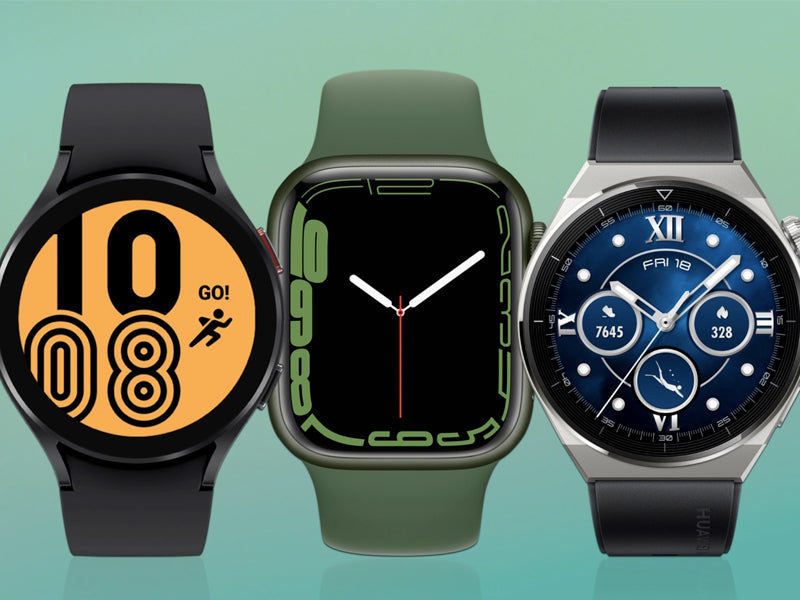Looking for a headphone shopping guide to assist you to understand which features to search for? If so, you’re at the right place. Headphones are more than simply a method to listen to music; they've evolved into wearable devices that can enhance your smartphone experience. It can be hard to comprehend all of the specifications and much more difficult to appreciate the significance of certain software features over others, especially if you're new to purchasing headphones. With our ultimate headphone buying guide, we hope to alleviate the sense of analytical paralysis.
Step 1 - Choose the right headphone type
The most important decision of all.
Before we go into wireless options, noise cancellation, smart features, and so on, you need to decide on your preferred headphone type, so let's get started. The three fundamental types of headphones are over-ear, on-ear, and in-ear.

Over-Ear
Over-ear headphones are the biggest of the three styles and encircle or cup your ear, staying in place with light pressure on your temple and upper jaw. Over-ear headphones are the original, traditional form of headphones and come in two varieties: closed and open.
Closed-back headphones naturally keep your music in, keeping others from hearing what you're listening to, but open-back headphones have openings that allow outside noises in but keep inside sounds out for a more natural sound experience.
| Pros | Cons |
|---|---|
| Most comfortable to wear for long | Most expensive |
| Excellent noise isolation | Not portable |
| Best sound quality | Might produce heat on the ears |
On-Ear
On-ear headphones are often smaller and lighter than over-ear headphones, and they remain on your head by applying pressure directly to your ears, similar to ear muffs. On-ear headphones are also available in both open and closed configurations; however, on-ear headphones often allow more ambient sound to pass through than over-ear headphones.
| Pros | Cons |
|---|---|
| Compact in size | Not great for noise cancellation |
| Produce less heat in comparison to over-ear headphones | May not be comfortable to wear for long |

In-Ear
In-ear headphones, often known as earbuds or earphones, are the smallest of the three varieties and fit in the ear canal.
| Pros | Cons |
|---|---|
| Lightweight | Easy to misplace |
| Good for noise cancellation | Sound quality may not be great due to its size |
| Ideal for an active lifestyle |
So, hopefully, you've decided on your preferred headphone type and whether you prefer closed or open-back ones. So let us continue. The exciting things come next.
Step 2 – Cost
More expensive headphones are typically built with higher-quality materials and superior engineering, which improves sound quality. $30 headphones are good but less good than $60 headphones. You may hear things in your music that you've never heard before in the $80-90 range.
Earbuds or headphones for $9.99 may last a year at most and may not sound fantastic, to begin with. Spending at least $20 on them assures you get basic music quality. One rule of thumb is to spend $50 on portable headphones and $250 for a home stereo set.

Step 3 – Wired or wireless?
This mainly comes down to personal preference.
Wireless headphones, such as the Bose SoundSport in-ears, feature a wire connecting the two earbuds. True wireless headphones, such as the Bose SoundSport Free, have no cords for connecting to a music source and no connections between each earphone.
And some advantages of wireless headphones include a sense of freedom, not being physically tied to a device, and so on — but why? If you can afford wireless headphones, get them. After all, practically every pair of wireless headphones on the market today comes with a wire, so you get the best of both worlds. If you’re trying to decide which true wireless earphones to buy, you might find reading this post useful.
Having said that, there are two major reasons to consider wired headphones. The first is that if you're a serious musician, sound engineer, or audio tech, you'll want wired headphones for higher-quality audio and consistently superior sound - regardless of the conditions. This is also true for audiophiles and/or anyone who lives for music.
The second major advantage of wired over wireless headphones is battery life. Bluetooth is a constant drain on the battery, and you never know when it may run out.
Step 4 – Examine the headphones’ sound isolation
This relates to how well they keep music in and noise out. Nothing is more inconvenient than having to turn up your volume to block out the sounds of your external surroundings.
Earbuds and in-ear headphones are better at sound isolation because of the seal they produce in the ear, as are over-ear headphones that create a miniature enclosed environment around the ear.
When purchasing over-the-ear headphones, consider whether they have an open or closed back. Open headphones sound more natural and less distorted, but people will hear your music and you will hear your surroundings. They are recommended for use at home and are more comfortable to use.
Closed-back headphones isolate noise better and make music sound more like it's in your head rather than the environment. They are less comfortable and have some reverberation due to sound waves rebounding off the closed, plastic back.
Some individuals prefer closed-backed headphones for their booming bass sound and isolation, while others prefer open-backed headphones for their natural and precise sound.

Step 5 – Battery Life
Depending on the type of wireless headphones you buy, battery life may or may not be an issue. On-ear and over-ear headphones have significantly longer battery life than truly wireless earbuds. Most wireless headphones last around 18 hours on a single charge, classic wireless earbuds last around 8 hours, and true wireless earbuds typically provide 4-5 hours of listening time on a single charge.
Fast charging is typically supported by all types of wireless headphones and earbuds. Typically, a specification will state that 10 minutes of charging delivers an hour of playtime. Most headphones enable a faster version of rapid charging, which can provide hours of listening after only 10 minutes of charging. Ideally, you'll want to know how long you need to use your headphones before they need to be recharged.
Step 6 – Investigate the Frequency Range
The frequency response of your headphone relates to the frequency range they can cover. The more dynamic range there is, the better.
For example, the Sony WH-1000XM4 has a wider frequency range (4-24,000 Hz) than the Audio-Technica SPORT2BK (15-24,000 Hz). The greater the difference between the minimum and maximum values, the greater the range coverage.

Step 7 – Assess whether you need a water-resistant headset with an IP rating or not
If you exercise frequently, you should invest in a set of fitness headphones or earbuds. Purchasing a gym headset may appear to be a waste of money, but no one wants a water-damaged headset. Choose a product that has received an Ingress Protection (IP) rating.
IPX4 is a standard IP classification, with the "X" indicating dust resistance. Climbers and training gymnasts should choose a headset with a dust-resistance rating because chalk particles can damage internal components if not properly cared for.
Step 8 – Look for the impedance of the headphones
To get the most out of your headphones, match their impedance to the audio equipment you're using. This is evaluated in ohms. In truth, if you don't, you'll need to turn up the volume significantly more than you would with a matched pair of headphones.

Step 9 - Examine the headphones' sensitivity
Sensitivity, which is commonly measured in decibels/mW, refers to how much sound (in decibels/dB) an earphone can generate for one milliwatt of the electrical signal. The greater the sensitivity, the greater the volume. Earphone sensitivity normally ranges between 80 and 110 dB.
Final Words
When it comes to choosing the appropriate headphones, earphones, or earbuds, as with most things in life, you get what you pay for. Consider how you intend to use your new headphones while selecting the right model.
We hope you found this guide helpful in deciding which type of headphones to buy. Remember that each has advantages and disadvantages - it's all about knowing what and where you'll employ them.







Leave a comment
This site is protected by hCaptcha and the hCaptcha Privacy Policy and Terms of Service apply.